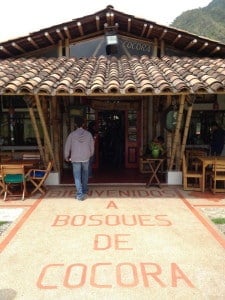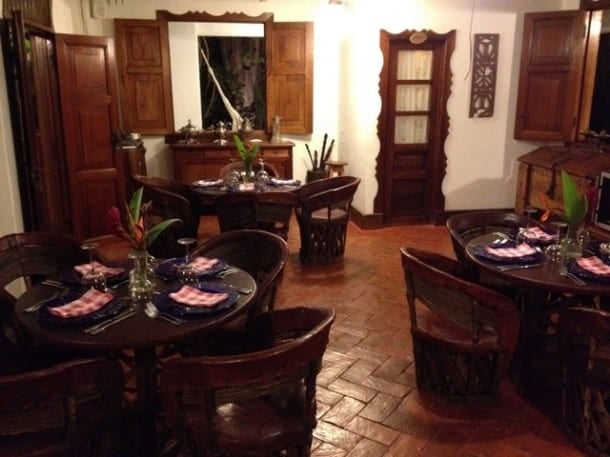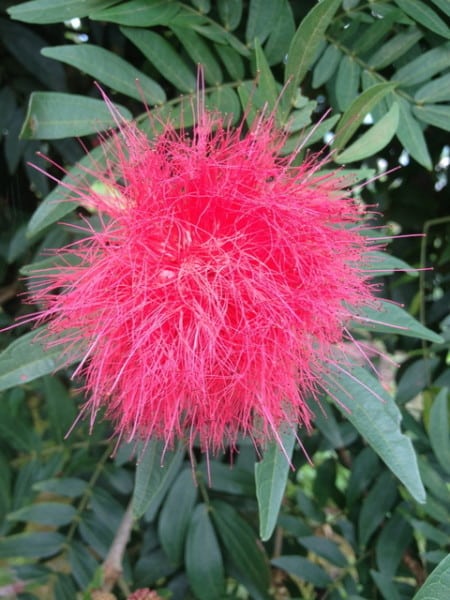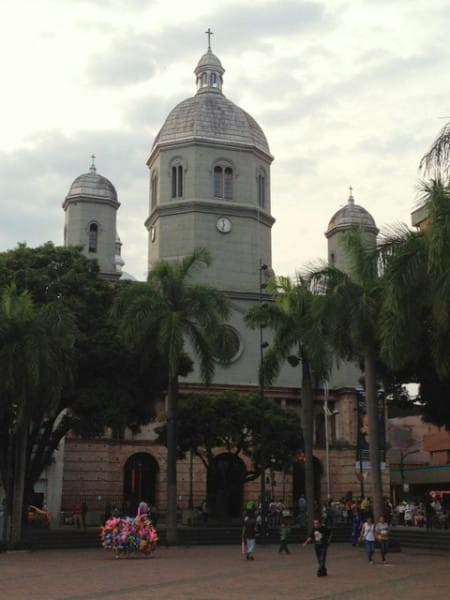
I’m not a coffee drinker. Never have been. In fact, if I can claim any caffeine loyalties, they’d be with tea, what with my comically British ancestry and tenures living in both London and Dublin (one of my coworkers in Dublin took nine tea breaks a day; he later cut it to seven in the interest of losing weight). Coffee, unless it’s flavoring ice cream, just isn’t my cup.
And yet, the Coffee Triangle was my favorite part of Colombia. Literally triangulated by the departments of Caldas, Quindío and Risaraldas, and more linearly by their capitals (Manizales, Armenia and Pereira, respectively), it is the epicenter of Colombia’s world-renowned, train-stoppingly/ship-divertingly good arabica coffee. And as it turns out, it can host a pretty epic adventure.
Even without my demand, coffee is the world’s second-most traded commodity behind crude oil (with production set to grow this year), and so I expected an enlightening experience going in. Who are the heroes at the bottom of the supply chain, I wanted to know, harvesting coffee berries (called cherries) from the lush Andean hills? What is the coffee culture in Colombia? Do Colombians hate Starbucks? And honestly, how do you even make coffee?

Well, now I know, so thank you, Coffee Triangle, for delivering; I now leave home each day carrying a lifetime of coffee knowledge.
And while I’m at it, thanks, as well, for the endless rolling mountains of green coffee plants (arabica coffee grows with a sort of visual rhythm, on and on until your camera flash is distracting the bus driver). Thanks for the Valle de Cocora (one of the most serene and beautiful places I’ve ever been). Thanks for the plants and trees and fruits and flowers borrowed from a Dr. Seuss book, and thanks for the unmistakable love with which your smaller-time cities welcomed me—and the good people they marched forth as ambassadors (cheers, Dave).
Thinking back to my first day here—unfurled in a hammock on a sunny coffee plantation, tasting made-up fruits, filling up on ajiaco and homemade ice cream—brings a smile to my face in a way that only the best travel experiences can. Kind of like the Lemonhead guy’s smile, I think. And after tasting a fresh cup of a Colombian coffee plantation’s best stuff, I’m starting to rethink my stance on coffee.
A little background
The Coffee Triangle is comprised of three of Colombia’s smallest departments: Caldas, Quindío and Risaraldas. Together amassing a measly 1% of the country’s total land area, they still manage to produce as much as 75% of Colombia’s world-famous coffee each year. Nearly two-and-a-half million people live alongside, and many as part of this powerful industry today—but it hasn’t always been that way.
The origins of the colonized Paisa region, which includes the Triangle and Antioquia (natives of both are still known today as “paisas”), can be traced back the arrival of the Spanish in 1540. They did not find coffee, however, nor should they have. Coffea arabica (one of two main species of the coffee plant grown commercially; the other is robusta), which Colombia now grows exclusively, is native to Ethiopia. Why it made the trip seems clear—it’s a stimulant that grows out of the Earth—but the when and how in the story are a little hazier (there’s strong case for the Jesuits).
In any case, the high elevation, steady warmth and rich, volcanic soil of the Colombian Andes proved to be the perfect match for Coffea arabica, and by 1835 the region now known as the Coffee Triangle exported its first shipment of coffee beans to the United States.
Helpful tip: The famous Juan Valdez character, long associated with Colombian coffee in the U.S., is a marketing creation of the National Confederation of Coffee Growers (and now a coffee franchise as well). You’ll see his face all over, but remember that that face represents all 500,000+ Colombian coffee farms, and so isn’t really an indicator of quality.
Weather
Arabica coffee flourishes in the Triangle for a few reasons, and reliably balmy weather is a big one. With a subtropical highland climate, the region (or at least its three capitals for easy reference) graces locals and travelers alike with 80-degree days at all times. On average, nights will drop to the mid-60s—which is more than warm enough to enjoy the nightlife in one layer. Rain, which is an important part of the coffee growing cycle, is particularly heavy in the spring and fall.
- More on expected temperatures and precipitations in Manizales
- More on expected temperatures and precipitation in Armenia
- More on expected temperatures and precipitations in Pereira

Where to start
Despite being full of independently interesting cities, the Coffee Triangle, of course, identifies a region. This labeling en mass is standard practice these days, but both UNESCO—in its World Heritage Site designation—and myself have obliged for good reason. Aesthetic and cultural treasures are blanketed across 5000 square miles here; the beauty just goes on and on. And anyway, would UNESCO really be wrong on this?
Still, it makes sense to have hubs and/or airports to fly in and out of (and they actually are nice cities), and so I present some basics on the Triangle’s three biggest cities:
- Manizales, La Nubia Airport (MZL), capital of Caldas and home to just under 450,000; highest ratio of students to population; famous for bullfighting (still legal in Colombia); closest to the mountains, and it feels like it; its architecture is more colonial than the architecture of the other two; Chipre area called “sunset factory” by Pablo Neruda
- Armenia, El Edén Airport (AXM), capital of Quindío and smallest of the three with about 300,000 people; called the “Miracle City” for its more recent, but rapid growth; home to the crazy Yipao parade each October; home to coffee-themed theme park called the Parque Nacional del Café
- Pereira, Mantecaña International Airport (PEI), capital of Risaralda and the biggest of the three with almost 600,000 people; its Plaza de Bolívar has a statue of Bolívar naked; lowest elevation and so warmest temperatures; metro area includes Cerritos (famous for pineapples) and Santa Rosa (famous for sausages)
El Recinto del Pensamiento
El Recinto del Pensamiento (location), on the outskirts of Manizales, is worth a look if you’re going to do the Triangle big. A wedding, a corporate event, a birthday party—if any of these are on your itinerary, this massive complex and its staff, now under the reins of the Estelar hotel group, will take care of you. The location is great in terms of convenience from Manizales (I just popped in for a quick look and a sorbete, which is like a coffee and fruit milkshake; it’s actually pretty good), and yet it feels remote enough to be its own world entirely. In this way, it helps that there is an ostrich on the property. In other ways, I’m not quite sure why they have an ostrich, but I do know that the pavilion would be a worthy space for something big.

5 things to do in the Coffee Triangle
1. Valle de Cocora (Cocora Valley) (on Google Maps)
The Valle de Cocora, part of the larger Los Nevados National Natural Park, is quite simply one of the most beautiful places I have ever been. Tucked between rugged, hilly Andean peaks, it is a valley of absolutely silly green as far and as high as the eye can see. More importantly, it is filled to the brim with its signature wax palms, whose bare trunks burst up to 200 feet out of the Earth up and down the mountainside. With a nice fog especially, (here that’s a good thing), it’s a very surreal and humbling place to find yourself.
Nature this raw generally doesn’t harmonize with urban sprawl, and here, you’re looking at about a 45-minute trip from Salento (which you should check out anyway). Needless to say it’s worth your time, but it actually gets better: From Salento, your trip into the valley can be via a traditional Jeep Willys. Via the back, specifically.
Post-WWII, the United States had a surplus of these monsters, which we dropped on Colombia for cheap (literally dropping them from helicopters in some cases). Colombians immediately fell in love with their durability, piled in and the rest is history. Back in the present, the stars of the aforementioned Yipao parade make for a thrilling and high-adrenaline ride into the Valle de Cocora.
As a final note, you can hop on a horse at the valley’s bottom, which actually has a fair amount to experience. While I was there, for example, I experienced the fact that I apparently don’t know how to ride a horse.
Helpful tip: The “Ritual de Palma” is a fairly new (about 3-years-old) Cocora experience that’s worth being a part of. Visitors from 48 countries so far have helped plant the literal seeds of future wax palms here, and LivingTrips (and probably others) can arrange for you to join the cause.
2. Hacienda San Alberto (on Google Maps)
About an hour outside of Armenia lies the town of Buenavista, the smallest municipality in Colombia. High up in the coffee-bearing hills—about a mile up—it also might be the best located (its translated name means “good view”), which works out great for the folks working at Hacienda San Alberto.
Here, they produce Café San Alberto, which famously has endured a process of “Quintuple Selection” if it makes it into your cup. On a tour of the whole operation (that’s why you’re here), the meaning of that phrase comes swirling into focus, and your coffee intellect takes another leap ahead of everyone back home. From the 45-degree slopes, the views alone really are “buena” up here, and as usual, the flowers casually growing nearby are mind-blowing (although it’s not all casual; some serve to visualize soil health).
Still, one of the coolest parts of the San Alberto ethos lies in its community partnership. It was the loss of a Buenavista citizen in a plane crash—and the insurance money his family took in with their grief—that brought the hacienda to life 35 years ago, and today, the desire to do good by Buenavista shines through in several social initiatives (single mothers only, for example, are charged with filtering the washed cherries by size).
All to say it’s a cool place, seemingly doing good things. And after the tour, if you opt for the “baptism” on the, you’ll end up with a certificate proving you know, and seriously you really know, your coffee.

3. Hacienda Venecia (on Google Maps)
When I spoke above about relaxing by hammock on a coffee farm, that was here, at Hacienda Venecia, a coffee farm/guesthouse/restaurant about 20 minutes outside of Manizales. My experience inside the red-emboldened hacienda was memorably delicious and relaxing, but outside was even better.
Filled up after my first taste of ajiaco (it’s good with the bitters), I joined my group on a step-by-step walk through the coffee production process, which it turns out (but not surprisingly) varies by farm. Here, at least, the pickers (who make just 10 USD a day) literally serenaded us from the hills as we traced the red (ripe) coffee cherries on their journey to be dried, bagged and sold to my friends back home.
Helpful tip: Among the mess of fruits growing at Hacienda Venecia are at least two kinds of guava. The yellow, sweeter guava has weak skin, and so is often inhabited by little worms. The green version, while decently bitter, is at least safe to eat.
4. El Mariposario de Quindío (on Google Maps)
It’s a butterfly-arium, and it’s great. El Mariposario, as it’s known, is about a half hour from Armenia, and given the fact that it’s shaped like a giant butterfly, you really can’t miss it. Inside the beast, you’ll be introduced to an all-star team of butterflies, some as big as your hand, as the wacky Colombian flora continues to throw curve balls at you. The all-female guides really love butterflies, too, and that’s just a really nice thing.
In the same complex, you can continue on to more great stuff, including: insect and reptile exhibits, a nature walk, a walkable labyrinth and a three-dimensional model of a planned tunnel through the Andes.
5. Salento (on Google maps)
The gateway to the Valle de Cocora is much more than that. Without a doubt, this tiny town of less than eight thousand is worth at least a couple hours on either side of your Jeep Willys adventure. Kick things off on a high note by climbing the 250 steps to the Alto de la Cruz (off Calle Real), where there seems to be no limit to the incredible views or Colombian ice cream treats.
Back down below, you can bring your ice cream as I did as you bounce between haggling-friendly shops, and maybe even buy a picture of a Jeep Willys. Salento’s tiny streets and own Plaza de Bolívar, checked with pastel yellows and purples, feel nothing but familial—and that’s pretty much the whole vibe here.
Where to eat
Big portions, big flavors and fresh ingredients (like endless fruits)—that’s what food in the Triangle is all about. You’ll find the menus of traditional dishes and specialties, from chincharrón to panela-based drinks, are decently similar place to place, but it’s all tasty enough that that doesn’t really matter. Here’s a quick list to get you started:

- Ambar, Pereira (on Google Maps), possibly the best restaurant not just in Pereira, but in the Triangle; the place was modern and hip, the food is inventive and the “Risotto con Parmesan” was unreal (among many worthy choices)
- Hacienda Venecia (on Google Maps), an incredibly relaxing and low-key spot—even without the coffee tour—where traditional food (like ajiaco) and coffee are made right in front of you
- Bosques de Cocora, Valle de Cocora (on Google Maps), where several styles of the trout are absolutely amazing (I got the “Dorada al ajillo en mantequilla,” which is with garlic) and the hot canelazo (with panela, cinnamon, aguardiente, cloves and passion fruit)
- Hacienda Combia (on Google Maps), another relaxing spot to rest up, take in some nice views and throw back plantain chips and protein
- Restaurant Hacienda San José (on Google Maps), where you can fill up on history with delicious house specialties at the 120-year-old Hacienda San José
Where to stay: Hotel Visus, Pereira
Of all the places to stay in the Coffee Triangle (and given I’ve only actually stayed in three), you really can’t do any better than Hotel Visus. This beacon of hospitality has a grand total of seven rooms, all of which, as is common in the boutique hotel world, fit into a sort of hierarchy of luxury that’s worth looking into (topped by the Luxor room). But no matter where you settle, you’re “settling” for a perfect bed, a bathroom that could bathe everyone you know, a walk-in closet, a full spa (for at most seven people, remember) and access to what is simply an escape of a hotel. I’d say the infinity pool, which looks out over the sprawling Colombian landscape, was the highlight if not for my dinner. Man, the “Langostinos de fusión” were good.



























Can’t beat fresh Colombian coffee in my opinion. However there are some that never make it to the states from the café regions such as my all time favorite called Café Quindío and it is strong and excellent. Every time I fly into Colombia, I am sure to grab a few bags for me and friends as gifts. http://colombiahelp.com